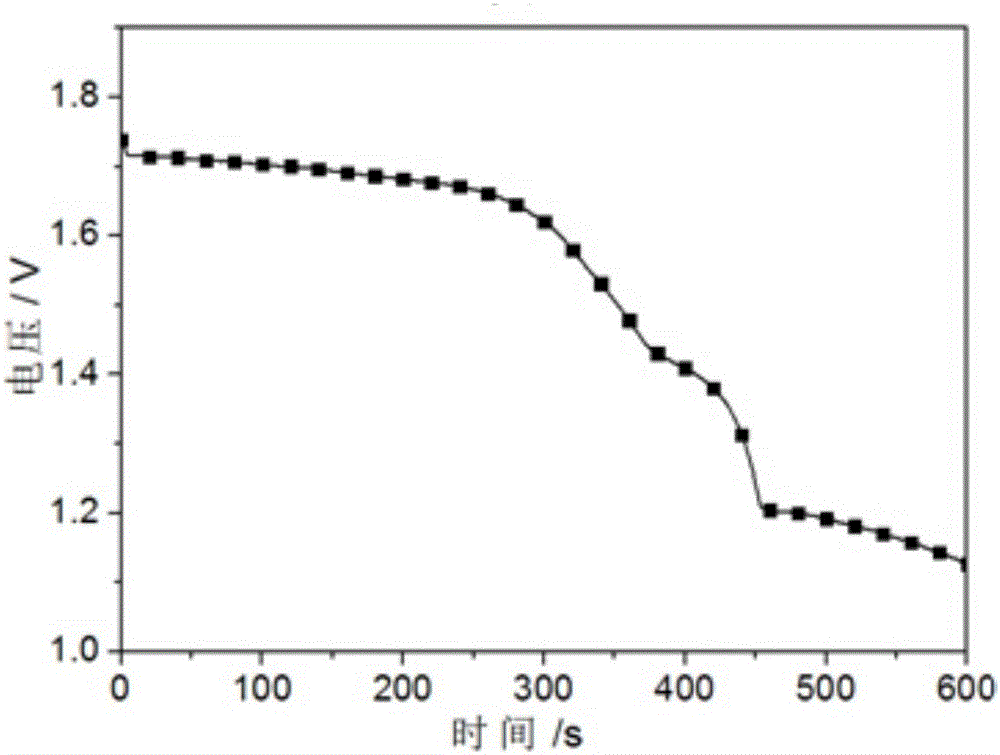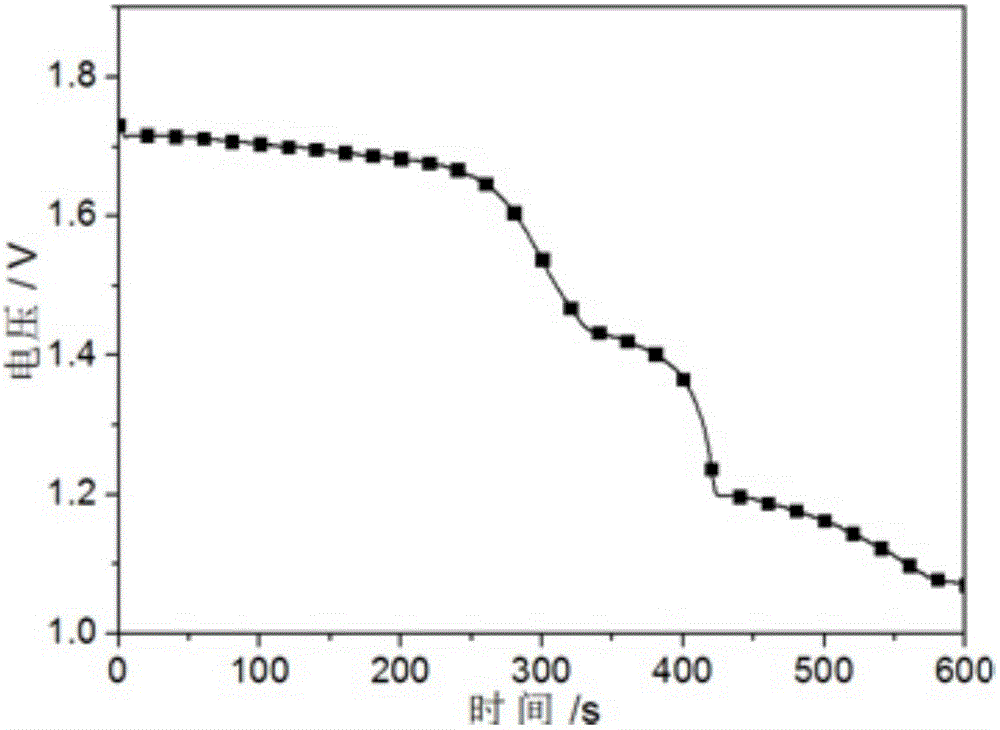Ternary composite electrode material for thermal batteries and preparation method thereof
A ternary composite, electrode material technology, used in battery electrodes, secondary batteries, circuits, etc., can solve problems such as poor air stability and small discharge specific capacity, and achieve improved discharge polarization, high discharge specific capacity, and air stability. good effect
- Summary
- Abstract
- Description
- Claims
- Application Information
AI Technical Summary
Problems solved by technology
Method used
Image
Examples
Embodiment 1
[0041] 1. Weigh 1g of cetyltrimethylammonium bromide, disperse in 100ml of deionized water, stir to disperse and dissolve to form solution A; weigh 0.3g of carbon spheres, disperse in solution A, stir evenly to form slurry B Weigh 1g of glucose, 10g of sodium thiosulfate, and 5g of cobalt acetate into slurry B in turn, and stir until slurry C is formed;
[0042] 2. Transfer the obtained slurry C into a reaction kettle, heat to 200°C, react at a constant temperature for 24 hours, and separate the solid product D after cooling;
[0043] 3. Put the solid product D into an oven, raise the temperature to 90°C, and dry at a constant temperature for 16 hours to obtain the product E;
[0044] 4. Put the product E in a tube furnace, raise the temperature to 450°C under an argon atmosphere, keep the temperature constant for 4 hours, and collect the final product after cooling, which is a cobalt disulfide ternary composite thermal battery electrode with a carbon content of 20wt.%. Mater...
Embodiment 2
[0048] 1. Weigh 0.02g of sodium dodecylsulfonate, disperse it in 100ml of distilled water, and stir until solution A is formed; weigh 0.005g of graphene, disperse it in solution A, and stir evenly to form slurry B; weigh 0.05g 1g of glucose, 1g of thiourea, and 0.5g of ferric chloride are added to slurry B in turn, and stirred until slurry C is formed;
[0049] 2. Transfer the obtained slurry C into a reaction kettle, heat to 150°C, react at a constant temperature for 48 hours, and separate to obtain a solid product D after cooling;
[0050] 3. Put the solid product D into an oven, raise the temperature to 80°C, and dry at a constant temperature for 12 hours to obtain the product E;
[0051] 4. Put the product E in a tube furnace, raise the temperature to 300°C under an argon atmosphere, keep the temperature for 6 hours, and collect the final product after cooling, which is an iron disulfide ternary composite thermal battery with a carbon content of 5 wt.%. electrode material...
Embodiment 3
[0054] 1. Weigh 0.2g of sodium dodecylbenzenesulfonate, disperse it in 100ml of water, and stir until solution A is formed; weigh 0.02g of carbon nanotubes, disperse it in solution A, and stir evenly to form slurry B; Add 0.2g sucrose, 2g sodium thiosulfate, and 1g nickel nitrate to slurry B in sequence, and stir until slurry C is formed;
[0055] 2. Transfer the obtained slurry C into a reaction kettle, heat to 180°C, react at a constant temperature for 30 hours, and separate the solid product D after cooling;
[0056] 3. Put the solid product D into an oven, raise the temperature to 120°C, and dry at a constant temperature for 3 hours to obtain the product E;
[0057] 4. Put the product E in a tube furnace, raise the temperature to 500°C under an argon atmosphere, keep the temperature constant for 2 hours, and collect the final product after cooling, which is a nickel disulfide ternary composite thermal battery with a carbon content of 10 wt.%. electrode material.
[0058]...
PUM
 Login to View More
Login to View More Abstract
Description
Claims
Application Information
 Login to View More
Login to View More - R&D
- Intellectual Property
- Life Sciences
- Materials
- Tech Scout
- Unparalleled Data Quality
- Higher Quality Content
- 60% Fewer Hallucinations
Browse by: Latest US Patents, China's latest patents, Technical Efficacy Thesaurus, Application Domain, Technology Topic, Popular Technical Reports.
© 2025 PatSnap. All rights reserved.Legal|Privacy policy|Modern Slavery Act Transparency Statement|Sitemap|About US| Contact US: help@patsnap.com



